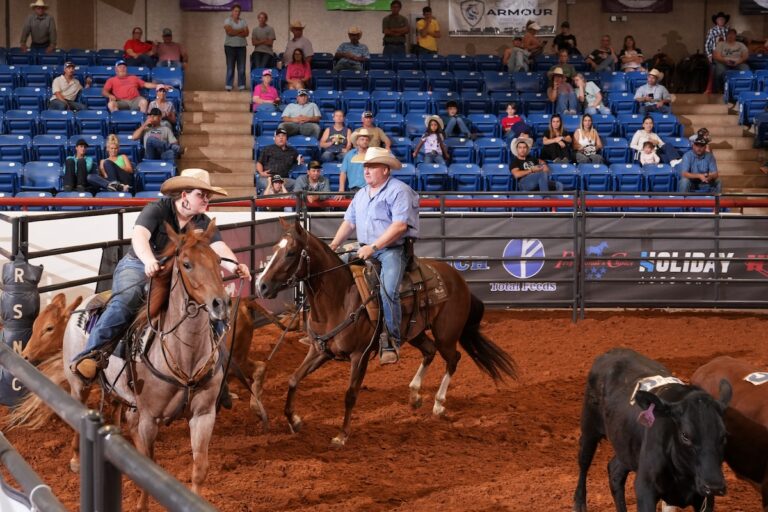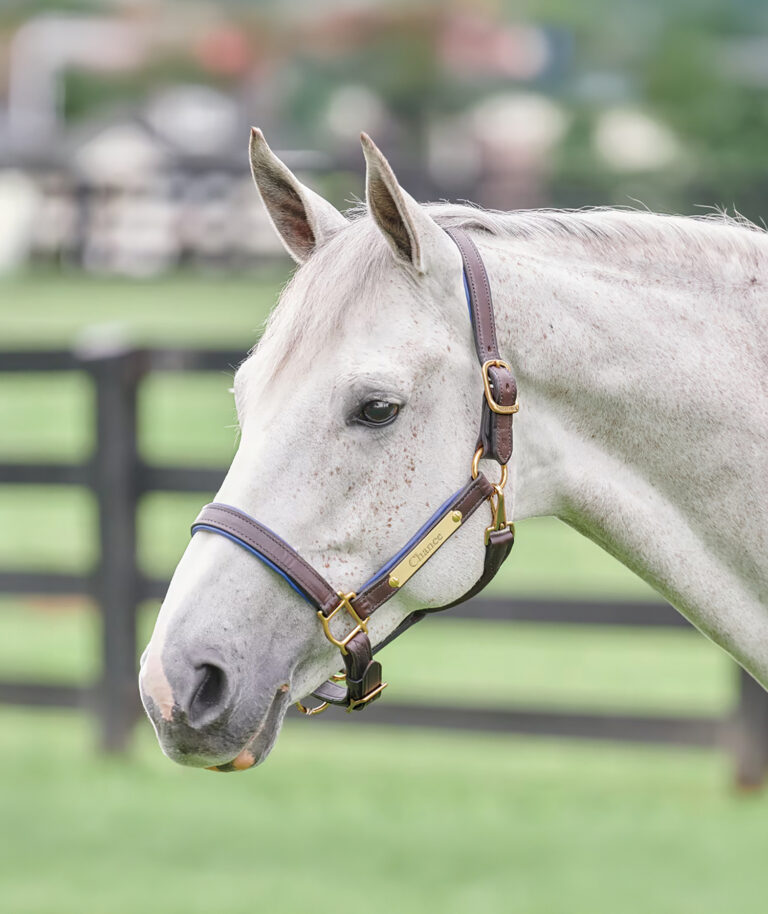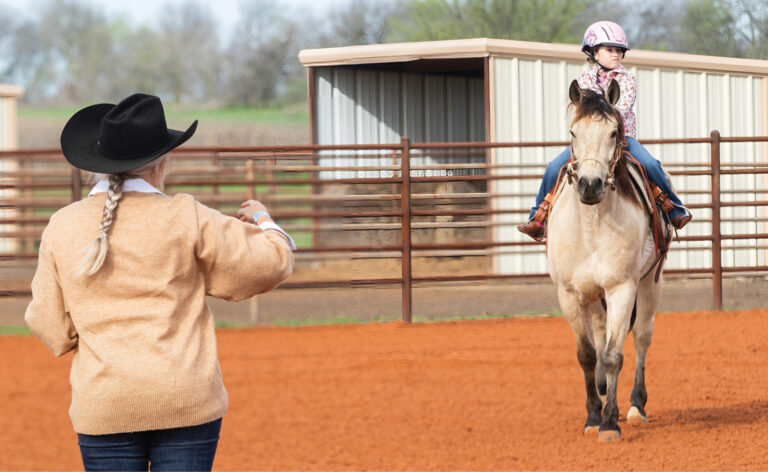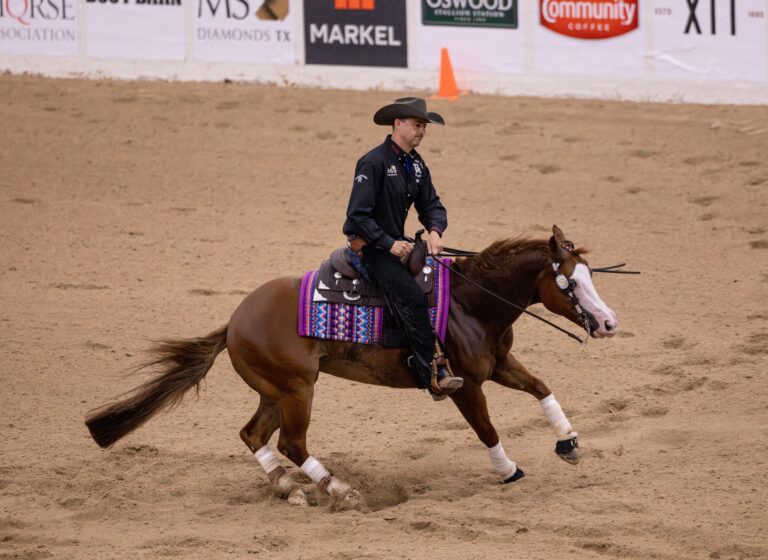Body control plays an essential role in all aspects of riding, even for kids.
When you think of body control in your riding, you might consider it a more advanced skill. While many elements of body control do require deeper knowledge and experience than your child rider might have, there are aspects of it that you can help develop early in their riding years. This way, they’ll be more prepared to tackle the tougher exercises as they mature as a rider.
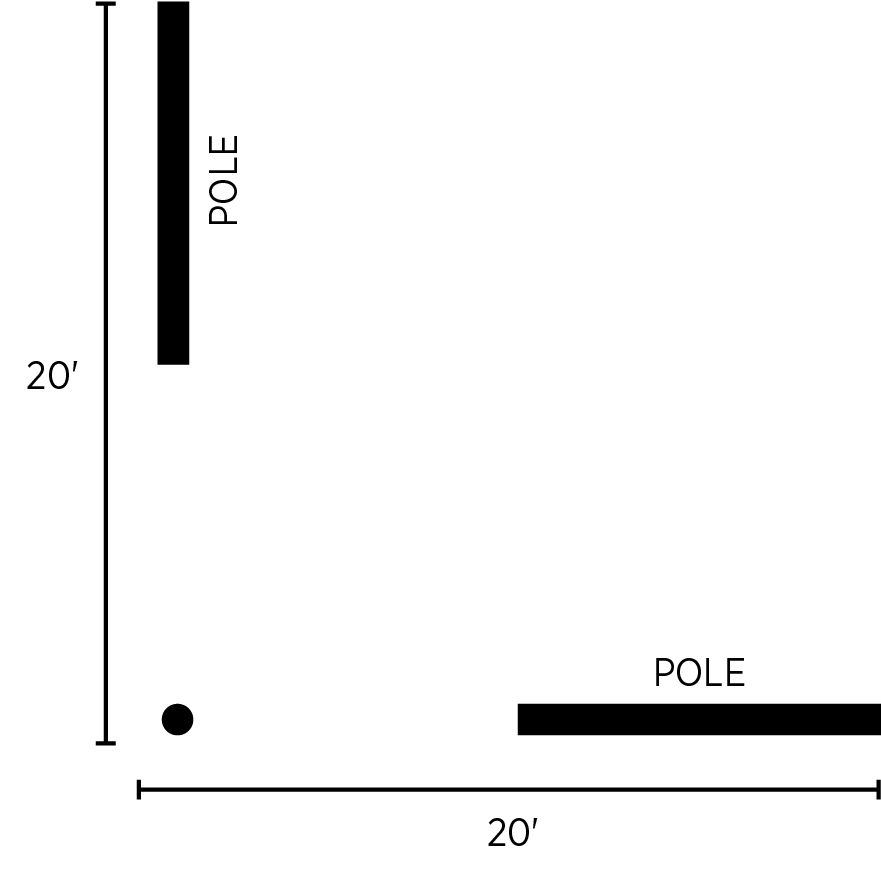
Working with all-around and ranch-event horses, we have many opportunities to execute ground poles/logs in our classes. We take elements of these obstacles to work on at home, especially with our developing riders. Learn more here.
Single-Pole Drill
To help a young rider get in tune with the horse, they must understand which foot is where and which foot crosses a pole first.
Have your child ride over the pole, and then ask them to determine which foot went over first. After a few times at this, challenge them to control which foot goes over first. This is one of their first introductions to body control. They can trot up to the pole and think about manipulating the horse’s stride to get the correct foot over first.
This is a great starting point for getting your rider in tune with the horse while preparing them to count strides. Spend plenty of time calling out strides, counting how many it takes to get from one side of the pole to the other, and even around the arena. It all helps connect your child’s mind to their horse’s feet.

Create a Corner
Grab two poles, and place them in an L shape, with a space between the point where they’d touch in a
traditional L shape. Begin at a walk, working over the L and helping the child notice that it takes fewer steps to get over the poles and around the corner when they ride closer to the inside and more strides when they’re to the outside.
Next, ask them to trot around the corner in 10 steps. Through trial and error, they’ll start to understand when they need to slow down, move in or out, or speed up. Once they’ve mastered that, have them dictate which foot goes over first. Then move onto the lope, covering the corner in five steps. The child will start to understand that if their horse has a bigger stride, they’ll need to stay to the outside. While a shorter-strided horse can achieve the goal closer to the corner.
Connecting the rider’s brain to the horse’s feet helps immensely with more challenging obstacles and maneuvers, such as sidepassing or backing an L shape.
Key Coaching Pointers
For the most successful experience for you and your child, remember these tips.
- Keep it slow. By starting slow and building stride length and speed, your child can start to problem-solve without the pressure of speed.
- Exercise patience. Anytime a rider learns a new skill, emphasize patience not only with themselves, but with their horses—and their coach. Take many deep breaths, stop and discuss the challenges, and remind them to keep their hands quiet and light.
- Help them quiet their mind. A busy mind leads to busy hands, busy feet and spurs, and rushing. Furthermore, if the rider’s mind is busy, it translates to the horse’s mind.
[LISTEN: Tips From the Team at No Where But UP Performance Horses]

